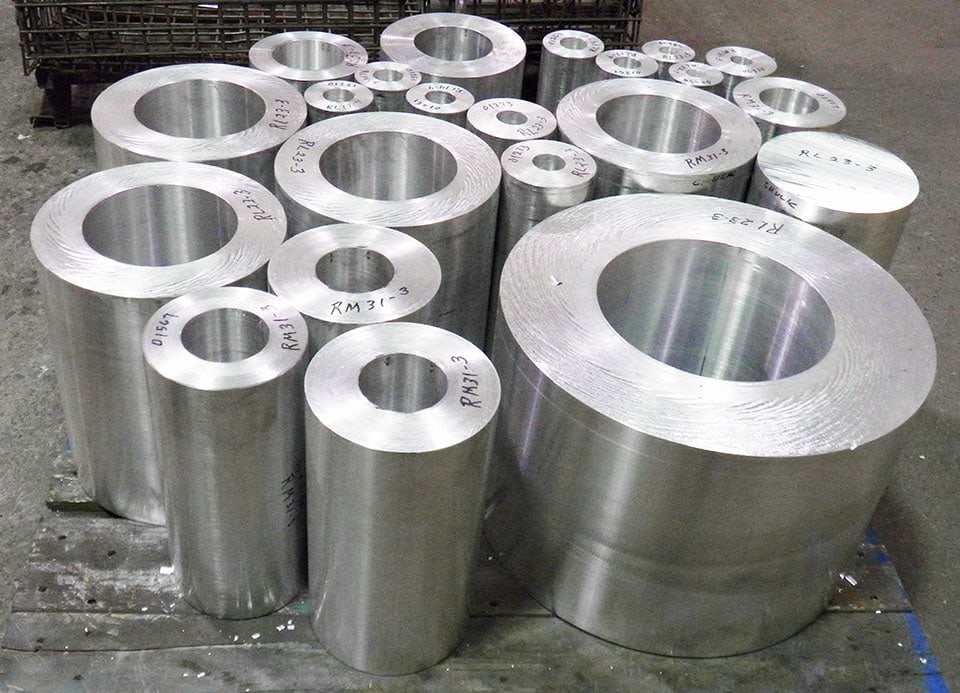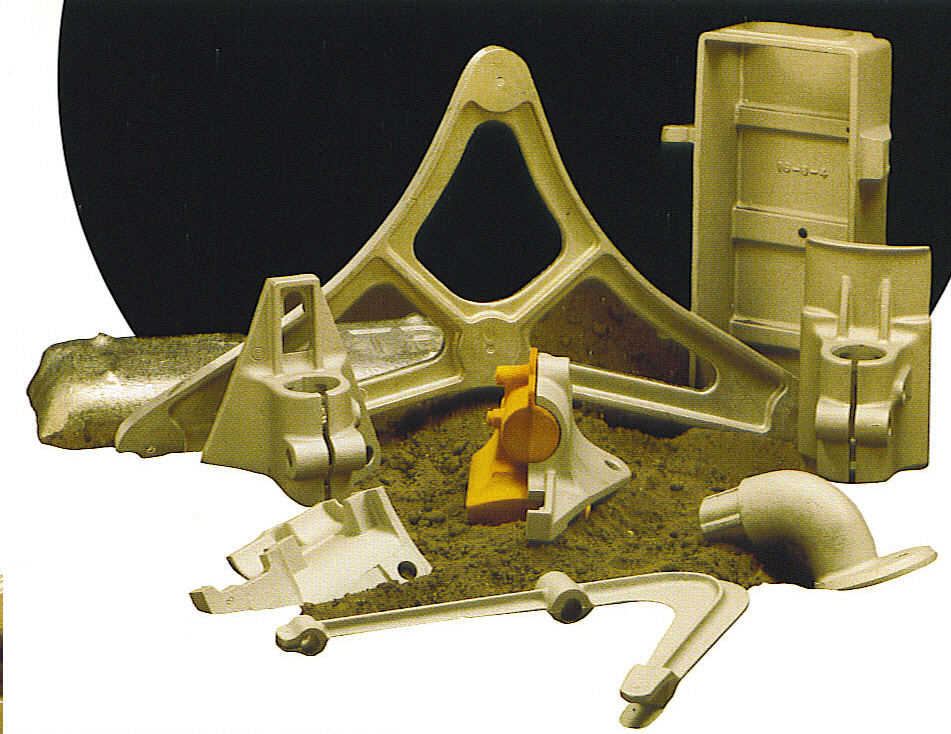How to select the best Metal Castings provider for your projects
Wiki Article
Exploring the Diverse Applications and Benefits of Aluminum Foundry in Modern Manufacturing
Aluminum factories are crucial in today's production landscape. They generate parts that offer different industries, consisting of automobile and aerospace. The light-weight nature of Aluminum combined with its resilience makes it a preferred selection. Additionally, cutting-edge casting methods enhance manufacturing performance. However, the implications of these developments on sustainability and future trends call for more exploration. What challenges and opportunities exist ahead for Aluminum factories in this developing market?The Role of Aluminum Foundries in Modern Manufacturing
Aluminum foundries play an essential function in modern-day production, contributing markedly to numerous markets such as auto, aerospace, and construction. These facilities concentrate on the melting and casting of aluminum, a lightweight, durable material known for its superb corrosion resistance and thermal conductivity. The foundries make use of innovative methods, including sand spreading, die casting, and financial investment casting, to create top notch components customized to certain applications.Trick Applications of Aluminum Elements Across Industries
Throughout numerous industries, Aluminum parts are indispensable to improving performance and performance. In the vehicle industry, Aluminum is extensively used for engine blocks, transmission situations, and structural components, adding to lighter cars that enhance gas effectiveness. The aerospace sector depends on Aluminum for airplane wings, frameworks, and elements, taking benefit of its high strength-to-weight proportion to improve trip performance.In electronics, Aluminum is made use of in warmth sinks and coverings, providing efficient thermal monitoring while maintaining light-weight features (Wisconsin Aluminum Foundry). The building industry gain from Aluminum in window frameworks, roof, and cladding, where longevity and appearances are vital
In addition, packaging applications utilize Aluminum for containers and foils, giving an effective barrier versus dampness and light. In each of these industries, Aluminum elements not just support useful needs yet likewise advertise sustainability via recyclability, making them a preferred option in modern production practices.

Advantages of Aluminum Compared to Other Products
The convenience of Aluminum makes it an exceptional option over lots of various other materials in manufacturing applications. Among its primary advantages is its light-weight nature, which adds to minimized energy consumption and improved performance in transport and construction sectors. In addition, Aluminum displays exceptional rust resistance, enhancing the long life of items without the need for comprehensive upkeep.Aluminum's malleability enables for intricate designs and shapes, providing to diverse market demands, from vehicle to aerospace. Its electric and thermal conductivity likewise exceeds that of numerous choices, making it suitable for applications calling for warmth dissipation or electric transmission.
Light weight aluminum is very recyclable, advertising sustainability in producing procedures. Contrasted to steel, it uses a beneficial strength-to-weight ratio, permitting durable yet light-weight structures. Jointly, these attributes placement Aluminum as a recommended material, making it possible for manufacturers to accomplish both efficiency and sustainability in their items.
Innovative Casting Methods in Aluminum Foundries
In the domain name of Aluminum production, cutting-edge casting techniques are reinventing the manufacturing process and enhancing the material's applications. Among these techniques, pass away casting attracts attention for its capacity to generate complicated forms with high precision and very little waste. This method allows for rapid mass production, making it ideal for industries such as automotive and electronics. In a similar way, investment spreading has obtained appeal due to its capacity to develop complex layouts with excellent surface area finish, accommodating both big and tiny parts.An additional remarkable method is sand spreading, which offers versatility and cost-effectiveness for producing larger parts. Current improvements in 3D printing innovations are additionally being integrated right into Aluminum casting, making it possible for fast prototyping and personalization. These advancements not just improve performance but also increase the opportunities for Aluminum applications throughout different markets, eventually driving the evolution of modern-day production techniques.
Sustainability Efforts in Aluminum Production
Sustainability campaigns in Aluminum manufacturing emphasis on improving recycling procedures, which significantly lower energy usage and discharges. Carrying out energy effectiveness techniques additionally contributes to a decreased carbon impact, making Aluminum a more eco pleasant product. These initiatives mirror the market's commitment to lasting manufacturing and resource preservation.Recycling Aluminum Perks
While Aluminum production is resource-intensive, recycling Aluminum offers substantial advantages that align with sustainability campaigns in manufacturing. Reusing Aluminum needs only 5% of the energy needed for main manufacturing, substantially minimizing greenhouse gas emissions. This energy efficiency not just saves natural resources however additionally lessens the ecological influence linked with mining and refining basic materials. Furthermore, recycling Aluminum sustains a round economic situation by reintroducing products back into the supply chain, thereby decreasing waste and advertising resource conservation. The process additionally produces financial advantages with task production in recycling facilities and minimizes reliance on international Aluminum sources. Generally, reusing Aluminum is a vital part of lasting techniques that add to a much more environmentally responsible manufacturing landscape.Power Effectiveness Practices
The Aluminum manufacturing market is progressively adopting energy efficiency practices to improve sustainability together with reusing initiatives. These campaigns concentrate on maximizing energy consumption throughout the manufacturing procedure. Makers are implementing advanced innovations such as high-efficiency heating systems and smart grid systems, which permit much better power management and lowered waste. Additionally, the assimilation of renewable resource sources, like solar and wind power, is becoming much more widespread, furthermore lowering reliance on nonrenewable fuel sources. Constant monitoring and evaluation of energy usage help with the recognition of inadequacies and opportunities for enhancement. Furthermore, workforce training on energy-saving strategies guarantees that employees actively add to energy preservation efforts, developing a society of sustainability within the company. These practices collectively sustain a more lasting Aluminum manufacturing landscape.Reduced Carbon Footprint
To achieve a decreased carbon impact, the Aluminum production sector is increasingly welcoming innovative sustainability campaigns. Companies read this are investing in innovative technologies that minimize power consumption and discharges throughout the production process. The assimilation of renewable power sources, such as solar and wind power, plays a critical duty in decreasing dependence on nonrenewable fuel sources. Additionally, the recycling of Aluminum scrap significantly decreases the carbon impact, as recycled Aluminum needs just a fraction of the energy needed for main manufacturing. Collaborative efforts among makers, governments, and ecological companies even more drive development in sustainability. By embracing these procedures, the Aluminum market not only addresses ecological problems yet also improves its competitive side in a market increasingly concentrated on environment-friendly techniques.Future Fads in Aluminum Foundry Innovation
Innovation goes to the center of Aluminum Foundry technology, driving considerable improvements and reshaping industry techniques. Emerging fads include the assimilation of man-made knowledge and artificial intelligence, enhancing process optimization and quality assurance. These modern technologies help with anticipating upkeep, reducing downtime and boosting functional performance. Additionally, using 3D printing and additive manufacturing is acquiring grip, enabling for intricate geometries and reduced material waste.Sustainability continues to be an important focus, with innovations in reusing strategies enhancing the round economic climate of aluminum. Firms are progressively embracing energy-efficient methods, such as low-pressure die spreading, which decrease energy usage and discharges. Moreover, digital doubles are coming to be commonplace, making it possible for real-time surveillance and simulation of Foundry procedures.

Regularly Asked Questions
What Precaution Are in Location at Aluminum Foundries?
Aluminum shops implement numerous safety procedures, consisting of protective gear, appropriate ventilation, fire avoidance systems, normal safety training, and emergency procedures to reduce threats related to heats, liquified steel handling, and potential direct exposure to dangerous materials.How Do Aluminum Foundries Guarantee Quality Assurance During Production?
Aluminum shops carry out rigorous quality control measures such as normal inspections, product screening, and adherence to market standards. These protocols assure uniformity in products while decreasing defects, eventually enhancing the reliability and performance of Aluminum elements.What Are the Common Obstacles Faced by Aluminum Foundries?
Aluminum shops frequently encounter challenges such as keeping consistent quality, Visit Your URL managing manufacturing prices, steering regulative conformity, dealing with equipment maintenance issues, and adapting to varying market needs, all of which can impact functional performance and productivity. - Metal CastingsExactly how Does the Aluminum Recycling Process Operate In Foundries?
The Aluminum recycling process in factories entails gathering scrap aluminum, thawing it in heaters, removing contaminations, and casting the molten steel right into desired shapes, therefore reestablishing it right into the manufacturing cycle successfully and sustainably.What Are the Job Opportunities Available in Aluminum Foundries?
Task chances in Aluminum shops include functions such as Foundry operators, top quality control examiners, upkeep specialists, engineers, and manufacturing managers. These positions call for numerous ability levels, offering prospective for job advancement within the manufacturing market.Sustainability campaigns in Aluminum production emphasis on boosting reusing procedures, which considerably decrease power consumption and exhausts. While Aluminum manufacturing is resource-intensive, reusing Aluminum presents considerable advantages that straighten with sustainability initiatives in manufacturing. Recycling Aluminum needs only 5% of the power required for key production, significantly lowering greenhouse gas emissions. The Aluminum manufacturing sector is significantly adopting energy effectiveness techniques to improve sustainability alongside recycling efforts. Additionally, the recycling of Aluminum scrap considerably lowers the carbon footprint, as recycled Aluminum requires only a fraction of the energy needed browse this site for primary manufacturing.
Report this wiki page